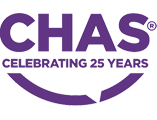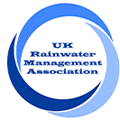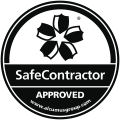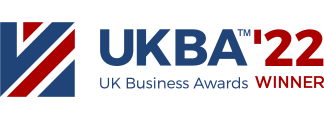Automatic Backwash Filtration for Rainwater Harvesting
10/02/2024

10/02/2024
Is Rainwater Harvesting included in your building project? If so, does the system have a third stage of filtration? If the answer is no or you are unsure what filtration techniques are used in Rainwater Harvesting, then this blog can help ensure you are equipped with the correct best practice information.
Traditionally, rainwater has been treated as a nuisance on construction projects as something to manage and dispose of as quickly and efficiently as possible. Actually, rainwater is a valuable resource for any building to reuse. Rainwater is naturally clear, safe, and free of debris when it falls from the sky. This means that relatively few stages of filtration are required on a Rainwater Harvesting System when compared to an existing mains water supply.
Although much less filtration is required when compared mains water, it is important to ensure that your non-potable water supply produced from the Rainwater Harvesting System is using the correct filtration. This is crucial for the safety of end users. The correct filtration is required because debris from the collecting roof area can enter the Rainwater Harvesting System. If not filtered properly, fine debris can block water meters and other important components within the Rainwater Harvesting System. This causes maintenance headaches for end users of the building and impacts water quality.
The British Standard for Rainwater Harvesting dictates two main stages of filtration are required. These come in the form of pre-tank filtration and the suction filter within the main storage tank. However, the most successful water-saving systems utilise a best practice third stage of filtration. The third filtration stage consists of either an Automatic Backwash Filter or more conventional cotton wound filters. It is important to understand the differences between these two filtration techniques.
1st stage of filtration – Pre-tank filters are a preliminary stage of filtration on a Rainwater Harvesting System which are designed to remove larger debris, such as leaves, foliage, and bird feathers. According to the British Standard for Rainwater Harvesting, preliminary filtration should be designed to filter water down to 1000 microns and be easily accessible for routine maintenance purposes.
2nd stage of filtration –Suction filters are situated in the main storage tank and are connected directly to the submersible pumps. The suction filter serves two purposes; the first purpose is to ensure that rainwater is collected from the cleanest part of the main storage tank. The cleanest part of the main storage tank on a Rainwater Harvesting System is 150mm above the base of the storage tank as this is where fine sediment settles. The second purpose is to filter rainwater down to 1000 microns.
3rd stage of filtration – An automatic backwash filter or cotton wound filter rated to 35 microns. This removes the risk of fine debris damaging important internal components within the Rainwater Harvesting System and improves water quality for the end user. More on this below.
Automatic Backwash Filters are the best practice approach to achieving a third stage of filtration on a Rainwater Harvesting System. The Backwash Filter consists of a high-quality metal coil to filter rainwater down to 35 microns. Automatic Backwash Filters are pre-fitted within the Rainwater Harvesting Control Panel. The integrated design simplifies installation for contractors and reduces the scope for error.


Other approaches to achieving a third stage of filtration on Rainwater Harvesting Systems are available. Commonly, cotton wound filters are installed to remove fine debris. Whilst cotton wound filters are better than no third stage of filtration at all, cotton wound filters require physical replacement once blinded with debris.
Physical replacements are a maintenance headache for an end user that can be avoided by using an automatic backwash filter. If opting for cotton wound filters, it is always advised to have a 50-micron filter followed by a 35-micron cotton filter. This approach ensures that the 35-micron filter does not immediately become blinded with debris.
This image shows a cotton wound filter that has become blinded with debris and will require physical replacement.
Learn more
Interested in learning more about commercial rainwater harvesting? Our fully certified CPDs are ideal for building specifiers and end users who want to learn more about rainwater harvesting.

My role as a Water Reuse Specialist means I get to keep up to date with all things water conservation. My favourite water saving tip is to turn taps off when brushing your teeth! I think rainwater harvesting and the water reuse industry is exciting, and I love sharing updates with our customers. View Matt’s Stormsaver profile here.
Privacy Policy Cookie Policy Site Map
Copyright © 2025 Stormsaver Ltd. All Rights Reserved.






